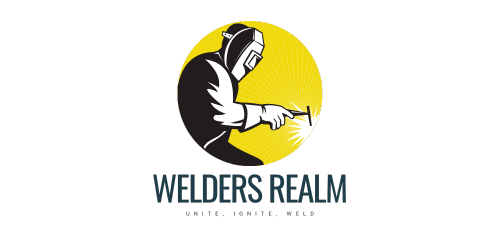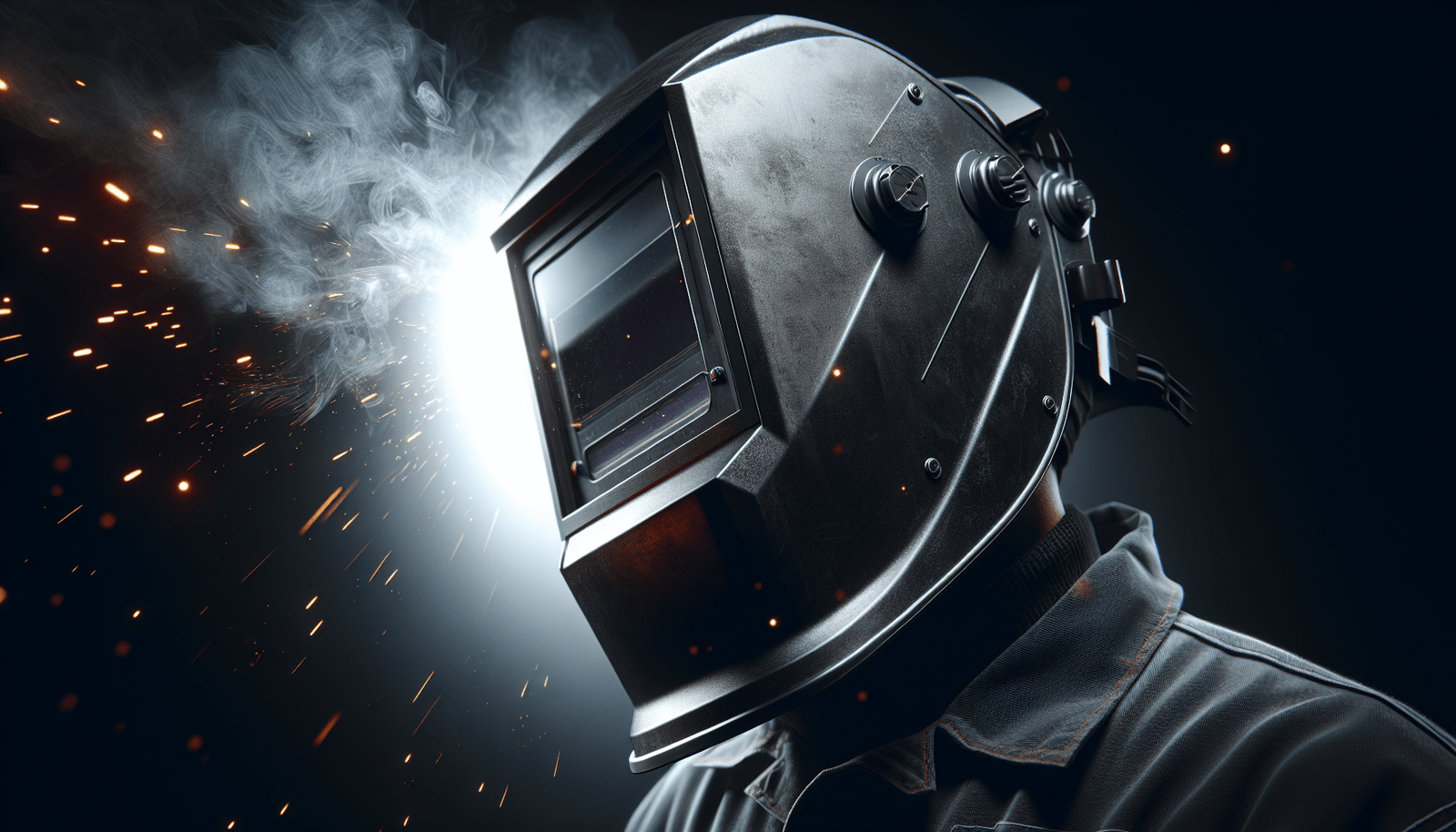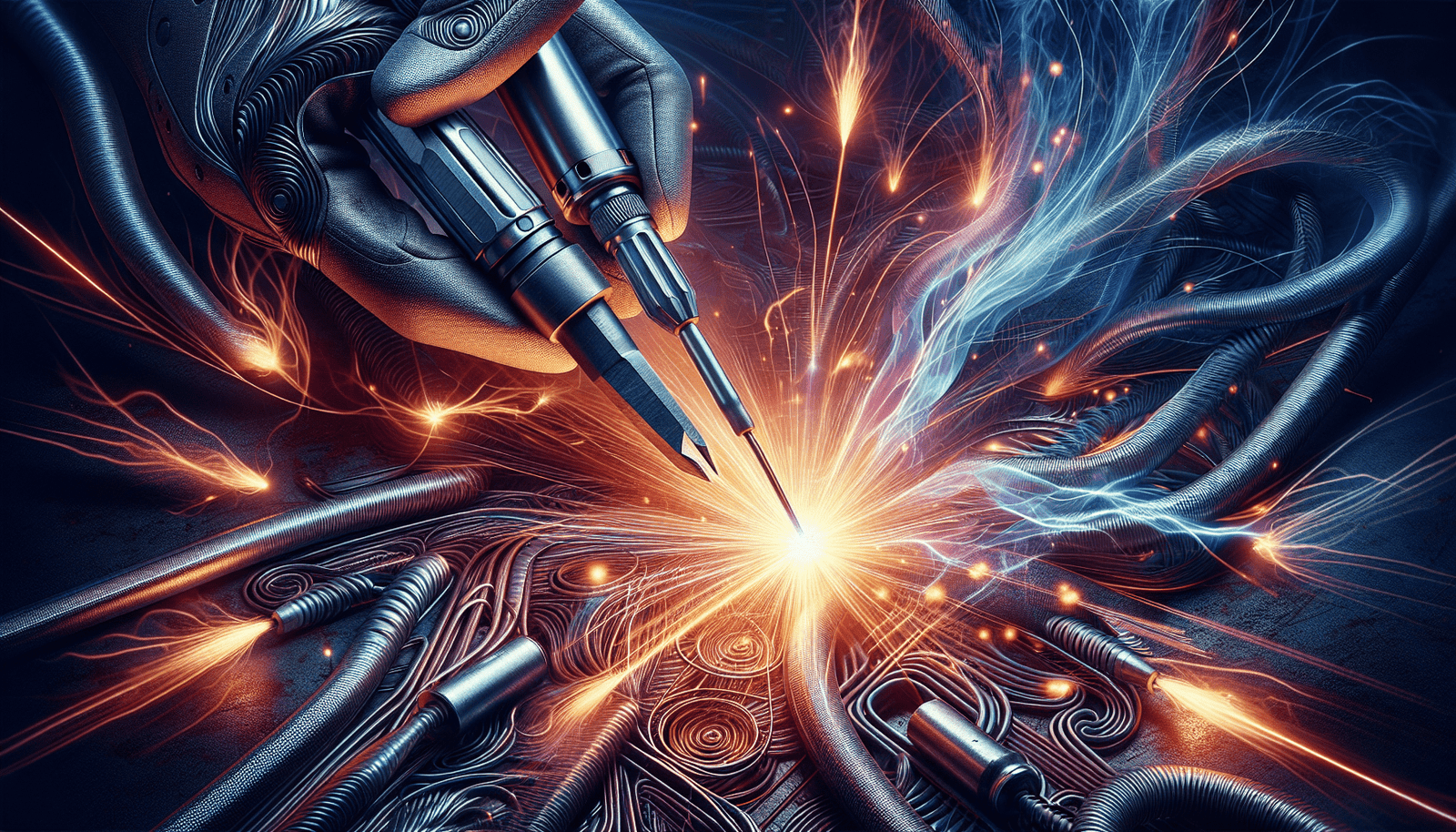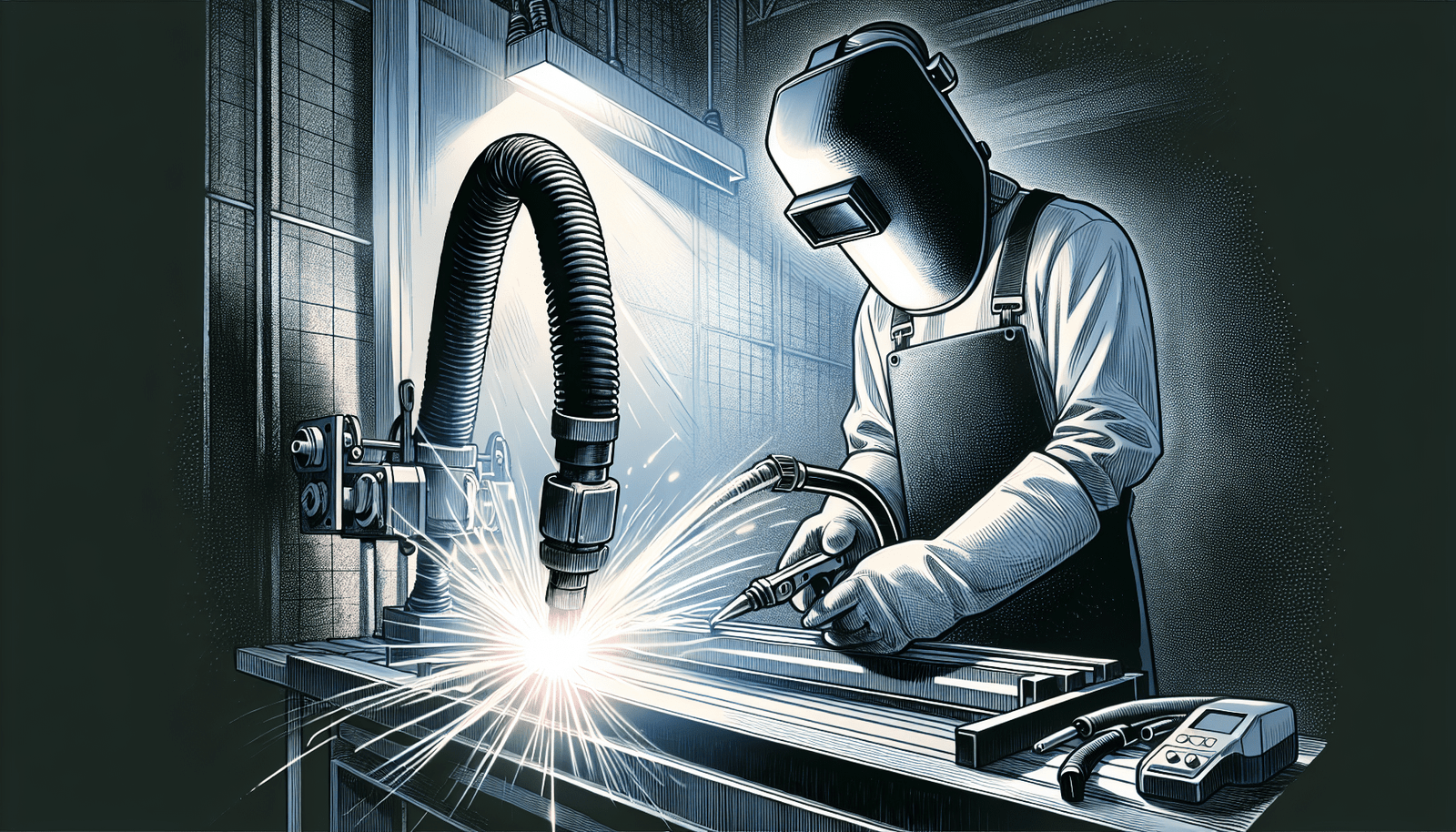In this beginner’s guide, you will discover a comprehensive overview of the different types of welding machines. Whether you are new to welding or simply curious about the various tools available, this article will provide you with valuable insights and knowledge. From stick welders to MIG welders, we will explore the functionality, benefits, and applications of each type. By understanding the differences between these machines, you will be able to make an informed decision when it comes to selecting the right welding equipment for your projects. So, let’s embark on this exciting journey of discovery and delve into the world of welding machines together!
Understanding Welding and Its Importance
Welding is a fabrication process that involves joining two or more pieces of metal by melting the materials and allowing them to cool, resulting in a strong and permanent bond. This process is essential in various industries as it enables the production of structures and products that are integral to our everyday lives.
Whether it’s constructing buildings, manufacturing automobiles, or even creating intricate metal artwork, welding plays a crucial role in the fabrication process. Without welding, the world as we know it would not be possible.
Introduction to Welding Machines
Welding machines have revolutionized the welding industry by providing a reliable and efficient means of joining metals. Over the years, welding machines have evolved significantly, incorporating advanced technologies and improved functionalities.
The history of welding machines dates back to the late 19th century when arc welding was introduced. Since then, numerous advancements have been made, resulting in the development of various types of welding machines that cater to different welding processes.
The basic components of a welding machine typically include a power source, electrode holder or torch, cables, and a ground clamp. These components work together to generate the necessary heat and electricity required for the welding process.
Classifications of Welding Processes
Welding processes can be broadly classified into four main categories: arc welding, gas welding, resistance welding, and energy beam welding. Each process utilizes different techniques and equipment to achieve the desired weld.
Arc Welding
Arc welding is one of the most widely used welding processes. It involves creating an electric arc between an electrode and the workpiece, generating intense heat that melts the metals and forms a weld. This process is highly versatile and can be used with various types of welding machines.
Gas Welding
Gas welding, as the name suggests, utilizes a combination of gases, such as oxygen and acetylene, to produce a flame that melts the metals being welded. This traditional welding process requires skill and precision to achieve a strong weld. Gas welding machines are commonly used for smaller-scale projects and repairs.
Resistance Welding
Resistance welding involves passing an electric current through the materials being joined, creating heat at the interface between the metals. The pressure is then applied to complete the weld. This process is ideal for high-speed production and is commonly used in the automotive industry.
Energy Beam Welding
Energy beam welding utilizes a concentrated beam of energy, such as laser or electron beam, to melt and join the metals. This precise and controlled process is commonly used in industries that require intricate and high-quality welds, such as aerospace and electronics.
Detailed Look at Different Types of Welding Machines
Welding machines are designed to cater to specific welding processes, providing different functionalities and capabilities. Here are four common types of welding machines:
Stick Welders
Stick welders, also known as shielded metal arc welding (SMAW) machines, are popular among beginners and professionals alike. These machines utilize a consumable electrode coated in a flux material, which produces a shielding gas when melted. Stick welders are versatile, portable, and can be used in various environments, making them suitable for both indoor and outdoor projects.
MIG Welders
MIG (Metal Inert Gas) welders, also referred to as gas metal arc welding (GMAW) machines, are known for their ease of use and versatility. These machines use a wire electrode that is continuously fed from a spool. The electrode melts, and a shielding gas is released, protecting the weld pool. MIG welders are commonly used in automotive, construction, and manufacturing industries.
TIG Welders
TIG (Tungsten Inert Gas) welders, also called gas tungsten arc welding (GTAW) machines, are known for their precision and ability to produce high-quality welds. These machines use a non-consumable tungsten electrode to create the arc, and a separate filler material is often added manually. TIG welders are commonly used in industries that require aesthetically pleasing welds, such as art, jewelry, and aerospace.
Flux-Cored Welders
Flux-cored welders are similar to MIG welders but use a flux-cored wire instead of a solid wire electrode. The flux material within the wire creates a shielding gas when melted, eliminating the need for an external shielding gas. These machines are versatile and can be used for both large-scale projects and small repairs.
Understanding the Working Principle of Different Welding Machines
To comprehend the working principles of different welding machines, let’s explore each type in detail:
How Stick Welders Work
Stick welders work by creating an electric current between the electrode and the workpiece. When the electrode comes into contact with the metal, it melts and forms the weld pool. Meanwhile, the flux coating on the electrode creates a shielding gas, protecting the weld from atmospheric contamination. The welder controls the arc length and the speed at which the electrode is fed, resulting in a strong and consistent weld.
How MIG Welders Work
MIG welders operate by feeding a continuous wire electrode through a torch. The wire is energized, creating an arc with the workpiece. Simultaneously, a shielding gas, typically a mix of inert and active gases, is released to protect the weld pool. MIG welders offer adjustable voltage and wire speed settings, allowing for precise control over the welding process.
How TIG Welders Work
TIG welders generate an arc between a non-consumable tungsten electrode and the workpiece. The welder manually adds a filler material to the weld pool, ensuring strong fusion between the metals. A heat-resistant shielding gas, such as argon, is continuously released to protect the weld from oxidation and contamination. TIG welders offer precise control over the weld pool, making them suitable for intricate and high-quality welding applications.
How Flux-Cored Welders Work
Flux-cored welders function similarly to MIG welders, but with the advantage of not requiring an external shielding gas. The flux within the wire electrode melts and creates a shielding gas, protecting the weld pool. Flux-cored welders offer adjustable voltage and wire speed settings, allowing for versatility in welding various metals.
Safety Precautions While Using Welding Machines
Safety is paramount when working with welding machines. Here are some important safety precautions to keep in mind:
Protective Gear for Welders
When using welding machines, it is essential to wear appropriate protective gear. This includes a welding helmet with a tinted lens to protect your eyes from harmful UV radiation, welding gloves to shield your hands from heat and sparks, and flame-resistant clothing to protect your body from burns. Additionally, wearing protective aprons, safety glasses, and steel-toed boots is highly recommended.
Workplace Safety Measures
Ensure that your work area is well-ventilated to prevent the buildup of dangerous fumes and dust. Keep flammable materials away from your welding station and have a fire extinguisher nearby. It is also crucial to inspect your welding machine and cables regularly for any damage or wear, as these can pose safety risks. Lastly, consider installing welding screens or curtains around your work area to protect nearby personnel from UV radiation and sparks.
Regular Maintenance and Inspection of Welding Machines
To ensure the safety and longevity of your welding machine, regular maintenance and inspections are vital. Clean the machine regularly to remove dust and debris that may interfere with its operation. Inspect cables, connections, and electrodes for any wear or damage and replace them promptly if necessary. Following the manufacturer’s recommendations for maintenance and calibration will help keep your welding machine in optimal condition.
Selecting the Suitable Welding Machine for Different Projects
Choosing the right welding machine for a specific project is crucial to achieve satisfactory results. Here are some factors to consider when selecting a welding machine:
Understanding the Project Requirements
Before choosing a welding machine, assess the project requirements. Consider factors such as the type and thickness of the metals to be welded, the desired quality and appearance of the welds, and the available power source. Understanding these requirements will help you determine the appropriate welding process and machine for the job.
Comparing Different Welding Machines and Their Capabilities
Research and compare different welding machines based on their capabilities and features. Pay attention to factors such as the welding process, input power requirements, duty cycle, and welding output. Evaluate the machine’s ease of use, portability, and additional features like adjustable settings and digital displays. Additionally, read reviews and seek recommendations from experienced welders to make an informed decision.
Cost Considerations
While cost should not be the sole determining factor, it is essential to consider your budget when selecting a welding machine. Compare prices of different machines with similar capabilities and features. However, keep in mind that investing in a high-quality machine, even if it comes with a higher price tag, can save you money in the long run through improved efficiency, durability, and performance.
Maintenance and Care for Welding Machines
Proper maintenance and care are integral to ensure the longevity and optimal performance of your welding machine. Here are some maintenance tips:
Regular Cleaning and Inspection
Cleaning your welding machine regularly is crucial to prevent the buildup of dust and debris. Use compressed air or a soft brush to clean the machine’s exterior and components. Inspect cables, connections, and electrodes for signs of wear or damage, and replace them as needed. Regularly check the machine’s cooling system and clean or replace filters, if applicable.
Replacing Worn Out Parts
As with any machine, certain components of a welding machine may wear out over time. Monitor the condition of consumable parts, such as electrodes, nozzles, and contact tips, and replace them when necessary. Following the manufacturer’s guidelines for part replacement will help maintain the machine’s performance and prevent potential issues.
Seeking Professional Help for Complicated Issues
If you encounter complex or technical issues with your welding machine, it is advisable to seek professional assistance. Certified technicians and welding machine experts have the knowledge and expertise to diagnose and repair complex problems. Attempting to fix these issues yourself without proper training can worsen the problem and compromise your safety.
Professional Training and Certification for Welding
Obtaining professional training and certification in welding can significantly enhance your career prospects and open doors to numerous opportunities. Here are some benefits of getting a welding certification:
Benefits of Getting a Welding Certification
A welding certification validates your skills and knowledge in the field, making you more marketable to potential employers. It demonstrates your commitment to safety and quality standards, which are highly valued in the welding industry. With a certification, you can also command higher wages and have better job security. Additionally, certification opens doors to specialized welding positions and further advancement in your welding career.
Finding Reputable Training Programs
To pursue a welding certification, it is essential to enroll in a reputable training program. Look for programs that are accredited by recognized welding organizations or educational institutions. These programs should provide a comprehensive curriculum that covers theoretical knowledge, hands-on training, and practical experience. Choose programs that offer certifications recognized by industry standards, such as those from the American Welding Society (AWS).
Career Opportunities for Certified Welders
The demand for certified welders is high across various industries. Certified welders can find employment in construction, manufacturing, automotive, aerospace, and many other sectors. They can work as welding technicians, fabricators, inspectors, or even pursue entrepreneurial ventures. With experience and advanced certifications, certified welders can also take on leadership roles, such as welding supervisors or quality control managers.
Future of Welding and Welding Machines
The field of welding is constantly evolving, and technological advancements are shaping the future of the industry. Here are some key areas driving the future of welding:
Technological Advancements in Welding
Advancements in welding technology are focused on improving efficiency, precision, and quality. Automation and robotics are being increasingly integrated into welding processes, allowing for faster and more consistent welds. The development of advanced sensors and monitoring systems enables real-time data collection, enhancing process control and quality assurance. Furthermore, the integration of machine learning and artificial intelligence is revolutionizing welding techniques, optimizing parameters for improved productivity and reduced defects.
Sustainability and Environment-Friendly Solutions in Welding
As the world becomes increasingly focused on sustainability, welding is also adapting to greener practices. Welding processes that utilize renewable energy sources, such as solar power, are being explored. Additionally, research and development are underway to reduce the environmental impact of welding, such as minimizing emissions, improving energy efficiency, and developing eco-friendly welding consumables. These efforts aim to achieve a more sustainable and eco-conscious welding industry.
Emerging Trends in Welding Technologies
Several emerging trends are shaping the future of welding. Additive manufacturing, also known as 3D printing, is integrating with welding techniques, allowing for complex and customized metal structures to be created layer by layer. Hybrid welding processes, combining different welding techniques, are being developed to achieve superior weld properties and increased productivity. Furthermore, the adoption of virtual reality and augmented reality in welding training and simulations is enhancing the learning experience and improving welder proficiency.
In conclusion, welding and welding machines have revolutionized various industries, enabling the creation of structures and products we rely on every day. Understanding the different types of welding machines, their working principles, and safety precautions is essential for anyone involved in welding projects. Through proper maintenance, care, and professional training, welders can excel in their careers and contribute to the advancement of the welding industry. The future of welding looks promising, with technological advancements and sustainability efforts driving innovation and enhancing the field’s capabilities.




